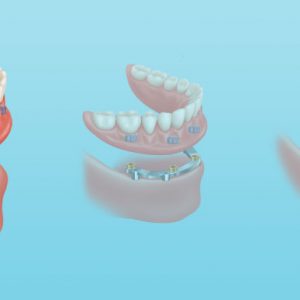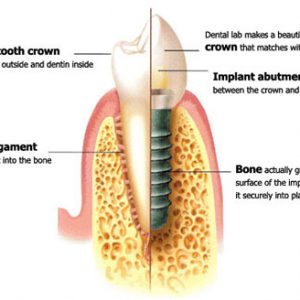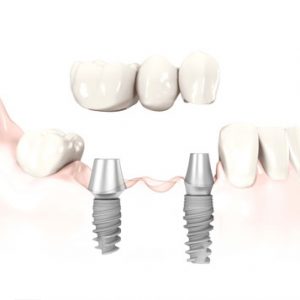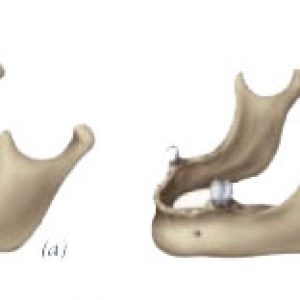Single Tooth Replacement
If you are missing one tooth, a dental Implant offers the option to replace both the missing root and the crown of the tooth without attaching to or affecting your neighboring teeth. Fixed bridges may require the shaping or cutting down of adjacent healthy teeth. A dental implant designed to replace a single tooth is composed of three parts:
- Titanium implant fixture that fuses with the jawbone
- Abutment, which screws into the implant and is the part that sticks up above the gum line so that a crown or bridge can be attached to it
- Crown– custom fabricated restoration which looks and functions just like your natural tooth
In the past the only permanent solution available to replace a missing tooth was a fixed bridge. In comparison to a bridge a dental implant has numerous advantages.
Conservative Treatment Option- Dental Implants do not rely on attachment to adjacent teeth and therefore prevent damaging potentially healthy teeth as is often done to fabricate a bridge. In a bridge if one of the abutment teeth gets periodontal disease or decay, you often have to replace the entire bridge, but with a Dental Implant there is no attachment to the adjacent teeth.
Esthetic and More Natural- Dental Implants look and function more like your own teeth. By attaching to and stimulating your jaw bone, they help to prevent the bone loss and gum recession that we often see in patients with bridgework and dentures. Since they are not attached to your other teeth you can floss and more easily clean around a single dental implant than a fixed bridge
Several Missing Teeth
If you are missing several teeth, we can either replace each one with an individual implant as in single tooth replacement, or fabricate an implant-supported bridge to replace them in cases where it is not practical to place an individual implant for each missing tooth.
Advantages of implant-supported bridges over fixed bridges or removable partial dentures:
- function and look like natural teeth
- replace missing teeth without attaching to or damaging neighboring natural teeth.
- Maintain and preserve bone. Dental implants attach to and stimulate your jawbone which helps to keep it healthy and prevent resorption. With a typical tooth supported fixed bridge or removable partial denture, the bone that previously surrounded the tooth often begins to deteriorate and resorb away.
Bone is maintained by the presence of natural teeth or implants (a). Bone loss occurs with the loss of teeth (b).
Conventional dentures may contribute to the loss of bone in the area where teeth are missing. As the image above shows, (a) the presence of natural teeth preserves the jawbone. When a tooth is missing, as in illustration (b), the bone may erode and weaken until it becomes necessary for a bone graft to be placed in order to facilitate dental implant placement. When a missing tooth is replaced by a dental implant, the fusion, or osseointegration, of the implant and bone provides stability, just as the natural tooth did.
Missing All of Your Teeth

Removable implant dentures on Zest locators utilizing 2-6 dental implants.
Zest locators are self aligning, low profile, resilient attachments, with adjustable levels of retention that offer an affordable option to hold your dentures in place without the use of adhesives. They are available for use on standard dental implants, as well as, two piece narrow or “mini” dental implants
Depending on your situation sometimes we can even modify your existing denture to fit your new zest attachments.



